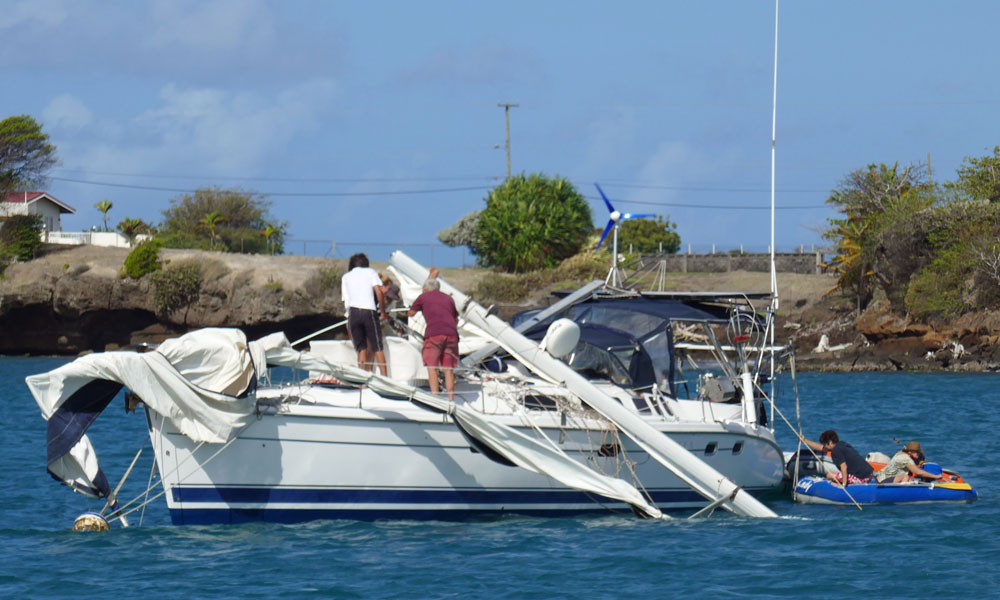Understanding Standing Rigging and Mast Tuning
Standing rigging supports the mast of a sailboat while mast tuning refers to the adjustments made to this rigging for optimal functionality and safety. Achieving the right balance of tension and configuration is necessary not only to enhance sailing performance but also to secure your vessel in adverse weather conditions. Ensuring your mast is properly supported can prevent damaging failures, especially when navigating rough seas.
Table of Contents
The Purpose of Standing Rigging: A Foundation of Safety & Performance
How Your Mast & Rigging Work Together
A Guide to Simple Mast Tuning Techniques
Identifying Problems: When to Inspect Your Rigging
Common Questions About Rigging & Mast Tuning
Experienced sailors universally affirm the importance of a tuned rig for a smooth sailing experience. The satisfaction derived from a well-tuned sailboat is undeniable. The article is directed at all sailboat owners anxious to learn about standing rigging and tuning their masts, ensuring their sailing adventures are both enjoyable and safe.
The Purpose of Standing Rigging: A Foundation of Safety & Performance
Standing rigging is essentially the backbone of a sailboat, comprising the wires and rods that uphold the mast. Specifically, shrouds serve as diagonal supports connecting the mast to the boat’s sides, while stays extend vertically from the mast towards the bow and stern. This entire configuration is built to withstand significant tension, especially when sailing against the wind.
Consider the mast a compression post, with the standing rigging working to keep it straight. A shifting tension in the rigging can lead to inefficient sailing or even catastrophic failure of the mast under pressure. Many sailors have experienced dismastings during situations that should have been easily managed, reminding us that having a well-tensioned rig is crucial for both performance and safety.
How Your Mast & Rigging Work Together
A comprehensive understanding of mast and rigging requires viewing them as a synergistic unit. The mast isn’t merely a fixed pole; it acts as a flexible beam, bending in response to loads while under sail. The tension and arrangement of the rigging actively manage this bending, helping to achieve optimal sail shape and efficiency.
Forestay & Backstay: These key lines offer fore and aft support. The backstay’s tension directly affects mast bend; tightening it can flatten the mainsail, providing a balance necessary for strong winds.
Cap Shrouds: These upper supports help prevent lateral mast movement during sailing.
Lower Shrouds: Essential for controlling the lower section of the mast, these shrouds connect to the deck.
Spreaders: These components support the shrouds, distributing tension effectively.
Tuning involves adjusting these components to ensure the mast is not only straight but adjusted for the appropriate amount of bend based on wind conditions.
A Guide to Simple Mast Tuning Techniques
Mast tuning can feel overwhelming, but it is manageable with this straightforward guide:
Ensure the Boat is Docked: Start by securing the mast straight while the boat is docked. Check its vertical alignment from multiple angles, ensuring it’s plumb from top to bottom.
Adjust Initial Tension: Begin tightening the cap shrouds evenly. Use either a tension gauge or the manual ‘shroud wiggle’ method to ensure they’re adequately firm.
Center the Mast: After securing the upper shrouds, check for any sideways movement. Adjust the lower shrouds as necessary to achieve a straight alignment.
Fore & Aft Rake: Adjust the forestay and backstay accordingly, aiming for a slight aft rake that ensures optimal sailing performance.
Final Checks Under Sail: The true test of your tuning comes once you’re on the water. Look for excess bending or movement in the mast and adjust accordingly to achieve the desired sail shape.
A consistent practice after every significant trip involves a thorough inspection of the entire rigging, identifying potential wear and tear to avoid mishaps in future sailing trips.
Identifying Problems: When to Inspect Your Rigging
Regular inspections should not be neglected. A good rule of thumb is to conduct a thorough rig check at least once a year, or before embarking on a major journey. Look for common warning signs that indicate issues:
Corrosion: Pay special attention to terminals, swages, and turnbuckles. Rust is an enemy—especially on stainless steel components.
Broken Wires: Even one broken strand can indicate a need for immediate repairs.
Cracked Terminals: These indicate fatigue and potential failure.
Worn Sheaves & Pins: Inspect these components for excessive wear, as they are vital for safe operations.
By keeping a close eye on rigging conditions, sailors can significantly reduce the chances of encountering issues at sea.
Common Questions About Rigging & Mast Tuning
Sailing is full of mystery and to optimize experiences, it’s important to understand common queries regarding rigging and mast tuning. Here are a few frequently asked questions:
- What’s the best material for standing rigging?
- How often should tension be checked on shrouds and stays?
- How do environmental conditions affect rig tuning?
- What substitute options exist if professional help for tuning is unavailable?
Keeping informed about these aspects of sailing allows for a safer and more enjoyable experience on the water.
In conclusion, mastering standing rigging and mast tuning is essential for every sailor aiming to enhance their sailing proficiency and enjoy their time on the water. By adopting preventative maintenance, understanding how the mast and rigging interact, and implementing proper tuning techniques, sailors contribute to unsafe sailing conditions. Whether planning a weekend getaway or a long voyage, having a reliable and well-tuned rig is critical.
Experiencing a new location is not just a superficial adventure; it often entails immersing into local culture, savoring unique culinary delights, and engaging with the dynamic rhythm of seaside life. If you’re looking to embrace this multifaceted experience, don’t forget to consider renting a boat on your next trip. Each inlet, bay, and lagoon reveals a unique story that complements the exquisite aspects of the region—just as much as local dishes, historical architecture, and languages bring the destination to life.
This insight into mast tuning and standing rigging underscores the heart of sailing. As you embark on your next marine adventure, trust in platforms like GetBoat.com, which provides user-friendly options for boat rentals to ensure you soak in every moment at sea. Your ability to explore the open waters, fish, or simply bask under the sun is just a reservation away. So chart your course and dive into your next great sailing experience!


